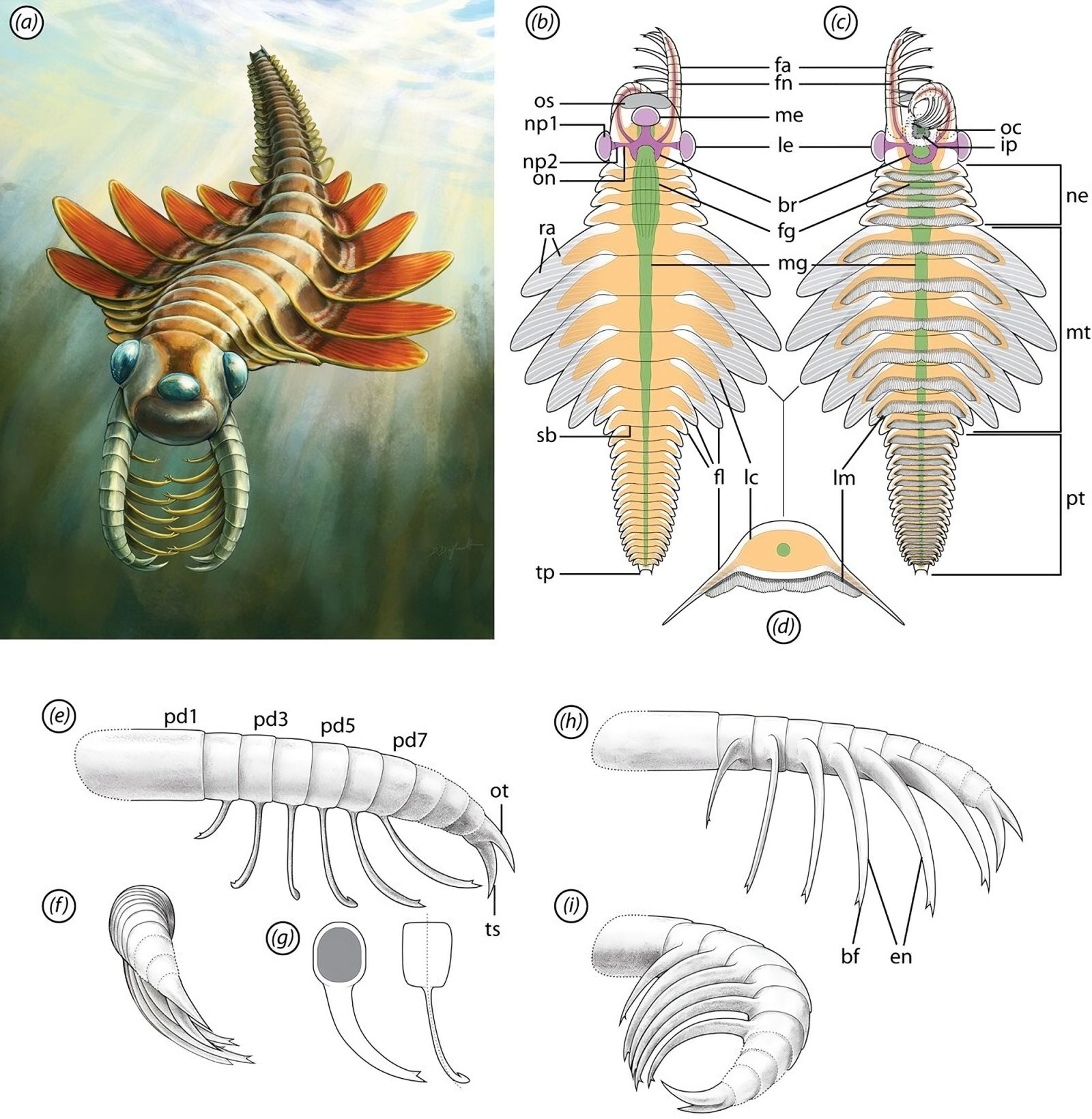Discovery of a strange extinct predator with 3 eyes and sharp claws 🦞
Published by Cédric,
Article author: Cédric DEPOND
Source: Royal Society Open Science
Other Languages: FR, DE, ES, PT
Article author: Cédric DEPOND
Source: Royal Society Open Science
Other Languages: FR, DE, ES, PT
Follow us on Google News (click on ☆)
This discovery, published in Royal Society Open Science, is based on the analysis of 61 remarkably preserved specimens. Their internal anatomical details, extremely rare for creatures dating back 508 million years, provide a unique window into Cambrian biodiversity.

a) Artistic reconstruction of the organism as it may have appeared alive.
b) Dorsal view of the entire body.
c) Ventral view of the entire body.
d) Cross-section of the central region (mesotrunk).
e) Lateral view of an appendage.
f) Frontal view of an appendage.
g) Lateral and frontal view of the fifth appendage segment (podomere 5).
h) Appendage viewed from below, in extended position.
i) Appendage viewed from below, in folded position.
Some elements shown with dotted lines (such as appendage segments or the ring-shaped brain) are hypothetical and inferred. Illustration by Danielle Dufault © Royal Ontario Museum.
An anatomy between convergence and uniqueness
Mosura fentoni stands out with a series of 16 abdominal segments bearing gills, an unprecedented feature among radiodonts that suggests specialized respiratory mechanisms observed in some modern arthropods. This structure evokes respiratory adaptations like those of horseshoe crabs, although these lineages are separated by hundreds of millions of years of evolution.
Its broad lateral fins and spiny claws made it an active predator. Its nickname "sea butterfly," inspired by its silhouette, masks a very different reality: Mosura fentoni belonged to an ancestral group, long before the emergence of insects or crustaceans.
Mosura fentoni had neither veins nor arteries: the fossils reveal an open circulatory system. The heart pumped blood into internal cavities, a mechanism still present in some modern invertebrates.
A sophisticated sensory system
The presence of three eyes, including an enlarged central one, suggests triangular vision adapted for hunting in marine environments. These organs, associated with fossilized nerve bundles, indicate already elaborate visual processing, similar to that of modern arthropods.
Researchers emphasize that these advanced traits contradict the idea of linear progression toward complexity. Mosura fentoni instead demonstrates an early diversification of predation strategies during the Cambrian.
Several specimens come from new excavations conducted in Kootenay National Park. Their excellent state of preservation confirms the exceptional potential of the Burgess Shale for studying early animal evolution.